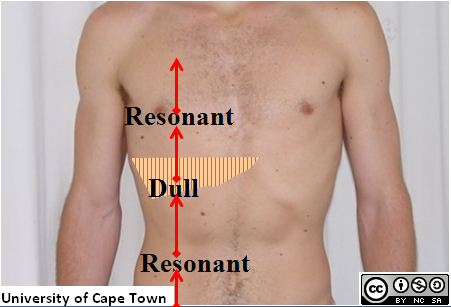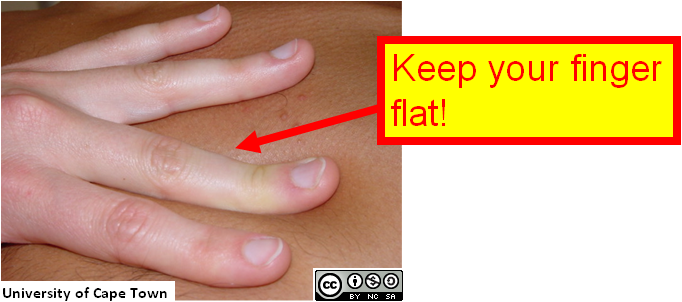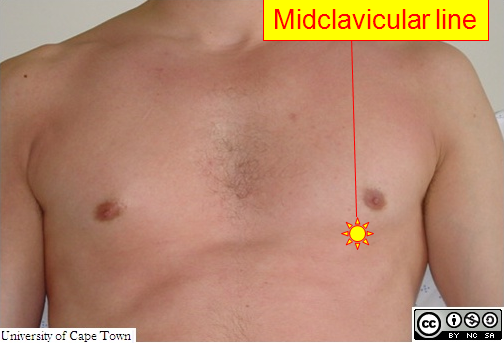Examining the liver
First determine the positions of the lower and the upper borders of the liver by percussion.
This technique is based on the observation that the liver, as a solid organ, is dull to percussion, whereas most of the abdomen is occupied by gas-filled bowel, and the chest by air-filled lung: in both cases, the gas gives rise to a resonant note.

| AFRIKAANS | TRANSCRIPT | XHOSA |
|---|---|---|
| I’m going to check your liver. / Ek gaan nou u lewer ondersoek. / Ndiza kuxilonga isibindi sakho | ||
| Please relax as I tap your tummy. / Ontspan asseblief terwyl ek u buik beklop. / Ziyekelele xa ndibetha nje kancinci esuswini. |
Percussion techniques in the abdomen
With percussion, the intention is to distinguish resonance from dullness: a resonant sound suggests underlying gas (such as gas within the bowel or air in the lungs), whereas dullness suggests a solid substratum – either fluid, a solid organ such as the liver or spleen.
Technique is important. It is essential that the finger which you lay across the abdomen or chest is stretched absolutely tight – the knuckles should be white.

One percusses slightly less forcefully over the abdomen than in the chest, but a good, easily audible note must still be obtained. Note the stretched finger on the abdomen, the percussing fingers flexed into a curved hammer, and all the movement occurring at the wrist.

Percussing the liver
Begin percussing in the right iliac fossa, then percuss upwards in a straight line in the mid-clavicular line (towards the nipple). As you cross the lower border of the liver, the note will change from resonant to dull. Do not stop. Keep on percussing until you reach the top border of the liver, where the note changes to resonant again.
| AFRIKAANS | TRANSCRIPT | XHOSA |
|---|---|---|
| I’m going to do this again. / Ek gaan dit weer doen. / Ndiza kwenza le nto kwakhona. | ||
| Are you okay? / Is alles nog reg (met u)? / Usonwabile? |
